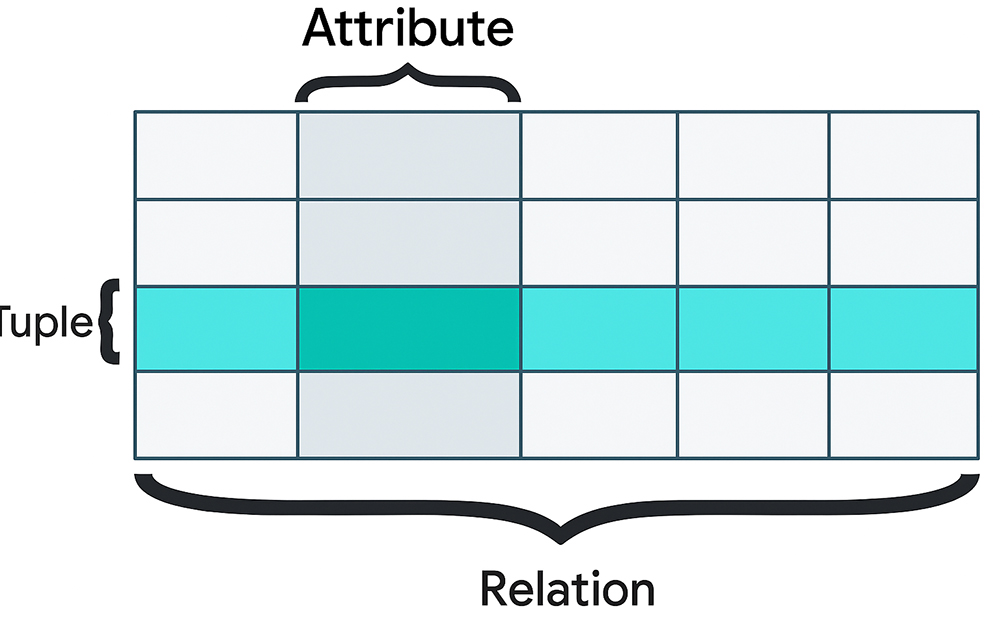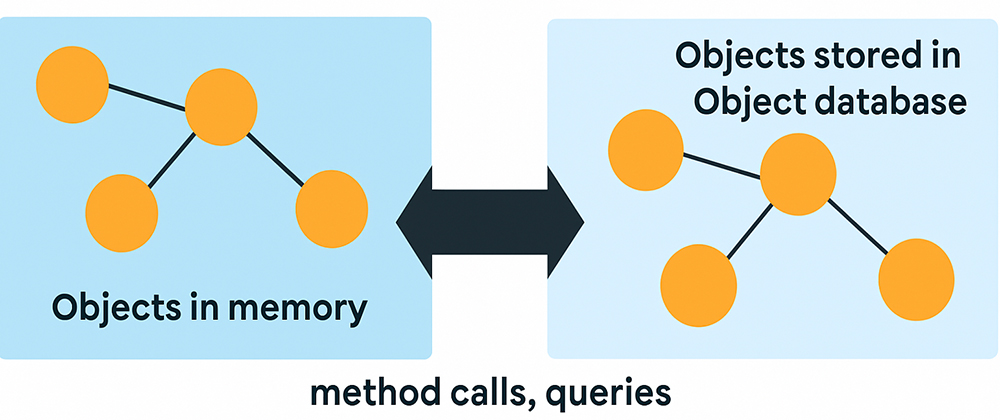| Lesson 2 | The Relational Database Model |
| Objective | Describe the Relational Database Model and compare it with other standard database models. |
Describe Relational Database Model
Introduction to Database ModelsStandard Database Models
Below is an overview of the four primary database models, their structures, and their key characteristics.
- Relational Model:
The relational model organizes data into relations, which are represented as two-dimensional tables. Each table consists of rows and columns, with designated columns (known as keys) used to order data or establish relationships between tables.
-
Key Components:
- Table (Relation): [1]The largest structure, representing a collection of data about a specific entity (e.g., a "Student" table).
- Column (Attribute or field) :[2] The smallest structure, defining a specific property of the entity (e.g., "Name" or "Student Number").
- Row (Tuple): A single record containing all attributes for a specific instance of the entity (e.g., a row for a student named Alice).
- Domain: The data type that defines permissible values for each column (e.g., string, integer).
- Keys: Columns used to uniquely identify rows (primary keys) or link tables (foreign keys).
-
Formal Definition: The relational model consists of:
- Scalar types (e.g., BOOLEAN, INTEGER).
- A relation type generator to define table structures.
- Relation variables to store data.
- A relational assignment operator to update data.
- Generic relational operators (e.g., JOIN, SELECT) for querying.
- Example: A "Student" table might have columns for Name, Student_Number, Class, and Major. Each row represents a specific student, with all values in a column sharing the same data type.
- Use Cases: The relational model dominates modern databases (e.g., MySQL, PostgreSQL, Oracle) due to its simplicity, flexibility, and support for Structured Query Language (SQL).
-
Figure: Relational Model

A table with rows (tuples) and columns (attributes) in the relational model.
-
Key Components:
- Object-Oriented Model:
The object-oriented model integrates object-oriented programming concepts into database management, storing data as objects rather than tables. This model is ideal for complex data structures, such as 2D/3D graphics, that require persistence without flattening into tabular form.
-
Key Features:
- Stores objects with inherent relationships, attributes, and methods.
- Supports advanced database operations like concurrency control, data recovery, and associative queries.
- Reduces the need to convert data between database and application formats.
- Evolution: Object-relational database management systems (ORDBMSs) combine relational and object-oriented features, extending relational databases with object storage capabilities.
- Use Cases: Common in applications requiring complex data, such as multimedia or scientific systems.
-

Objects stored with attributes and relationships in the object-oriented model
-
Key Features:
- Hierarchical Model
The hierarchical model organizes data in a tree-like structure, with parent-child relationships. Each parent can have multiple children, but each child has only one parent, creating a one-to-many relationship.
-
Key Features:
- Data is represented as nodes (object types) connected by arcs (relationships).
- Restrictive due to its rigid structure, limiting flexibility in modeling complex relationships.
- Example: IBM’s Information Management System (IMS) uses a hierarchical structure for transaction processing.
- Use Cases: Found in legacy systems or applications with strictly hierarchical data, such as organizational charts.
-
Key Features:
- Network Model
The network model extends the hierarchical model by allowing many-to-many relationships, representing data as a graph-like structure. It was standardized by the Conference on Data Systems Languages (CODASYL) in the late 1960s.
-
Key Features:
- Records (nodes) are connected by links (edges), enabling complex relationships.
- Supports more flexible data access than the hierarchical model but requires navigational querying.
- Use Cases: Used in legacy systems like IDMS, where predefined relationships and high performance for specific queries are needed.
-
Key Features:
- The XML Model: The XML model is used for exchanging data over the web, representing data in hierarchical tree structures with elements and tags. It combines database and document representation concepts, resembling the object model but with distinct terminology. Many commercial DBMS products have integrated XML capabilities for web-based applications.
Example: XML data might represent a product as<product><id>101</id><name>Smartphone</name></product>.
Comparing the Network Model and Relational Model
| Feature | Network Model | Relational Model |
|---|---|---|
| Structure | Graph-like (nodes and edges) | Tables (rows and columns) |
| Relationships | Navigational, using pointers | Logical, using keys (primary and foreign) |
| Querying | Procedural (e.g., CODASYL DML) | Declarative (SQL) |
| Flexibility | Rigid, complex to modify | Flexible, easy to modify |
| Performance | High for predefined navigational queries | Efficient for dynamic, ad hoc queries |
| Use Cases | Legacy systems, fixed relationships | Modern applications, dynamic data needs |
- Network Model Advantages: Excels in environments with complex, predefined relationships and high-performance navigational queries.
- Relational Model Advantages: Offers greater flexibility, ease of use, and scalability, making it the standard for most modern database systems.
Summary: The relational model’s logical structure and SQL-based querying make it more versatile and widely adopted, while the network model remains relevant in specialized, legacy applications.
Data Grids and Their Relationship to Databases and Data Models
-
What is a Data Grid?
A data grid stores data across multiple nodes, leveraging in-memory storage for fast access. Key characteristics include:
- Distributed architecture.
- Parallel processing for queries and transactions.
- High availability through replication and failover.
- Scalability by adding or removing nodes.
- Optional ACID transaction support.
-
Data Grid vs. Database
Data grids often serve as a cache layer or distributed storage to enhance database performance.
Example: An Oracle database stores persistent transactional data, while a data grid (e.g., Oracle Coherence, Redis) caches frequently accessed data to reduce database load. -
Data Grids and Data Models
Data grids use various data modeling approaches, adapting to their distributed nature:
- Key-Value Model: Fast lookups using keys and values (e.g.,
{ "User123": {"name": "Alice", "age": 30} }). - Document Model: Stores JSON/XML-like documents (e.g.,
{ "productId": 101, "description": "Smartphone" }). - Relational-Like Structures: Some grids (e.g., Oracle Coherence) support SQL-based querying.
- Event-Driven Model: Supports real-time event processing for updates or alerts.
Data Modeling Considerations for Data Grids:
- Prefer denormalization to avoid complex joins.
- Use hash-based or in-memory indexes for performance.
- Support eventual consistency in place of strict ACID compliance.
- Implement sharding and partitioning for distributed data.
- Key-Value Model: Fast lookups using keys and values (e.g.,
-
Real-World Use Cases
- Financial Systems: Low-latency stock trading platforms.
- E-Commerce: Caching shopping carts and session data.
- Big Data and AI: Real-time analytics and machine learning.
- Cloud and Microservices: Distributed caching and state management.